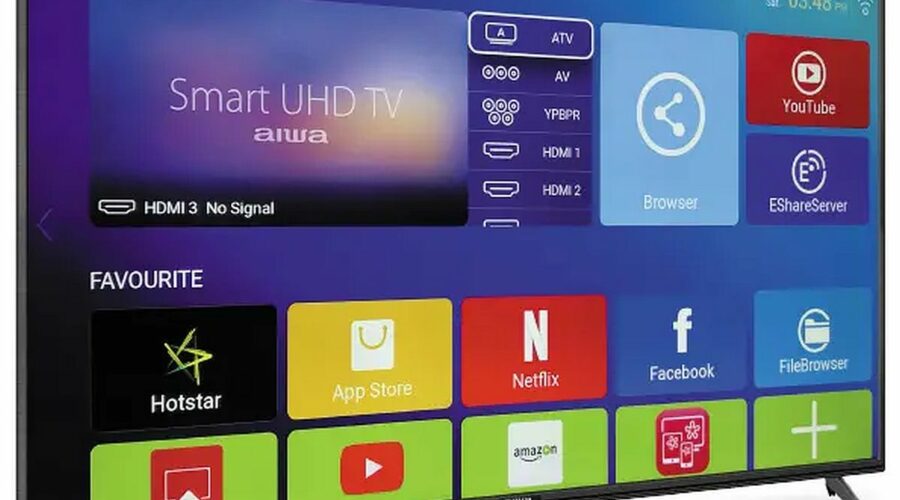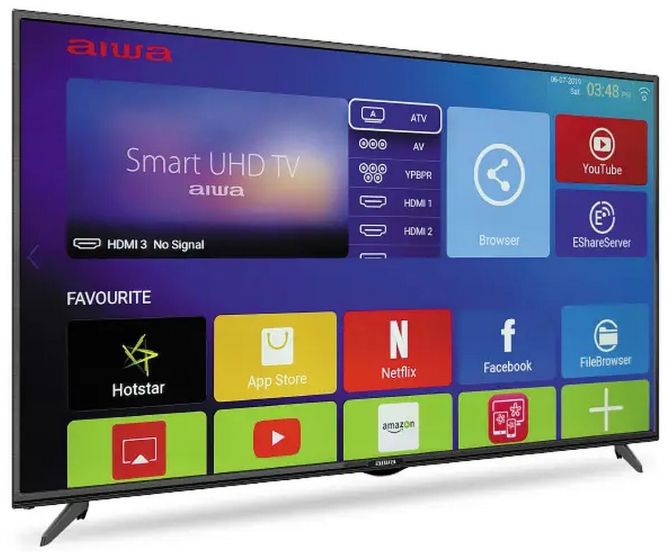Japanese brand Aiwa back with new India strategy for TVs
In the late 1990s, Japanese electronics brand Aiwa tied up with a maverick entrepreneur, Kabir Mulchandani, to sell its consumer electronic products.
Founder of Baron International, Mulchandani, all of 26 at that time, had already disrupted the television market through a tie-up with another Japanese player, Akai.
With a strategy that relied on heavy discounts, exchange offers and freebies, Akai was selling in huge volumes.
But Mulchandani’s relationship with it was strained.
So he decided to move and replicate the same magic with Aiwa in TV, audio, headphones and other electronics.
Aiwa was ready to offer its completely knocked down (CKD) TV sets at a much lower rate than Akai.
Mulchandani’s strategy, however, did not work for very long.
He lost money, faced alleged excise evasion cases and was forced to shut shop.
Aiwa is back now – this time with a fundamentally changed strategy.
Today, when the brand launched its LED television sets, it made it amply clear that this would not be a price warrior.
Instead, it is pricing these TVs between the more expensive Sony and Samsung on one hand and the mass market Chinese brands such as Xioami on the other.
“We have found the sweet spot. We are not a cheap product,” says Ajay Mehta, managing director of Aiwa India.
(Aiwa was earlier sold to Sony, which positioned it as a price-sensitive youth brand. But it was later withdrawn from the market and sold to a clutch of investors in 2017.)
“We will be 20-30 per cent cheaper than Sony and Samsung, but 10-15 per cent more expensive than the Chinese brands.
“We will leverage the fact that we are designed in Japan and produced in India,” says Mehta.
Starting at Rs 16,000, the TVs – ranging from 32 inches to 75 inches – will cost up to Rs 150,000.
Aiwa India has tied up with Dixon Technologies as its contract manufacturer.
Given its not-so-successful history in the country, Aiwa is taking great pains to shake off its “price-sensitive” image. So, it has decided not to sell online.
“We cannot succeed as a discount brand. That is why in the initial phase, we will not sell online where one has to offer discounts,” says Mehta.
“We want consumers to experience the product and see the difference.”
By December-end, it expects to be present in 600 stores in 20 cities.
Talks are also on with one of the country’s largest consumer electronics retail chains to stack Aiwa products.
Mehta is clearly not in a hurry to grab market share and volumes. His target is rather moderate: a 4-5 per cent share of the TV market in 4-5 years.
Currently, 17-18 million TV sets are sold in the country in a year and the market has been growing at 8-9 per cent per annum.
But the big question is: will Aiwa’s new strategy work?
Says a competitor, “There are so many brands, like Akai, which tried to make a re-entry.
“Or like Sharp, which had a Japanese pedigree, but did not make a dent.”
“The Indian TV market,” says this person, “is consolidated at the upper end with Sony and Samsung and at the affordable end by the Chinese, who are offering many tech features that only top brands used to give. So it will be an uphill task.”
The company set up its regional headquarters in India in February 2021 and despite the pandemic, launched its luxury brand of speakers.
To reiterate its focus on quality rather than price, these speakers cost up to Rs 60,000 (the brand also has an entry-level model priced at Rs 2,500).
Imported as a completely built-up (CBU) product and launched in October last year, it hopes to double its run rate from Rs 30 crore to Rs 60 crore per month, though it will always remain a niche market.
Aiwa India is looking to launch other products, too – air-conditioners, washing machines and refrigerators – in the next one to two years and hopes to hit $1 billion in revenues in 4-5 years.
TV, however, will be its anchor product, accounting for over 40 per cent of the turnover.
The rest is up to consumers.
Source: Read Full Article


